Abstract
STUDY OBJECTIVES--To describe mathematically the relationship between patterns of sexual mixing in the general population and those of people with gonorrhoea infection, and hence to estimate the sexual mixing matrix for the general population. DESIGN--Integration of data describing sexual behaviour in the general population, with data describing sexual behaviour and mixing among individuals infected with gonorrhoea. Use of these data in a simple mathematical model of the transmission dynamics of gonorrhoea infection. SETTING--The general population of London and a genitourinary medicine (GUM) clinic in west London. PARTICIPANT--These comprised 1520 men and women living in London who were randomly selected for the national survey of sexual attitudes and lifestyles and 2414 heterosexual men and women who presented to the GUM clinic with gonorrhoea. MAIN RESULTS--The relationship between sexual mixing among people with gonorrhoea and sexual mixing in the general population is derived mathematically. An empirical estimate of the sexual mixing matrix for the general population is presented. The results provide tentative evidence that individuals with high rates of acquisition of sexual partners preferentially select other individuals with high rates as partners (assortative mixing). CONCLUSIONS--Reliable estimates of sexual mixing have been shown to be important for understanding the evolution of the epidemics of HIV infection and other sexually transmitted diseases. The possibility of estimating patterns of sexual mixing in the general population from information routinely collected in gonorrhoea contact tracing programmes is demonstrated. Furthermore, the approach we describe could, in principle, be used to estimate the same patterns of mixing, using contact tracing data for other sexually transmitted diseases, thus providing a way of validating our results.
Full text
PDF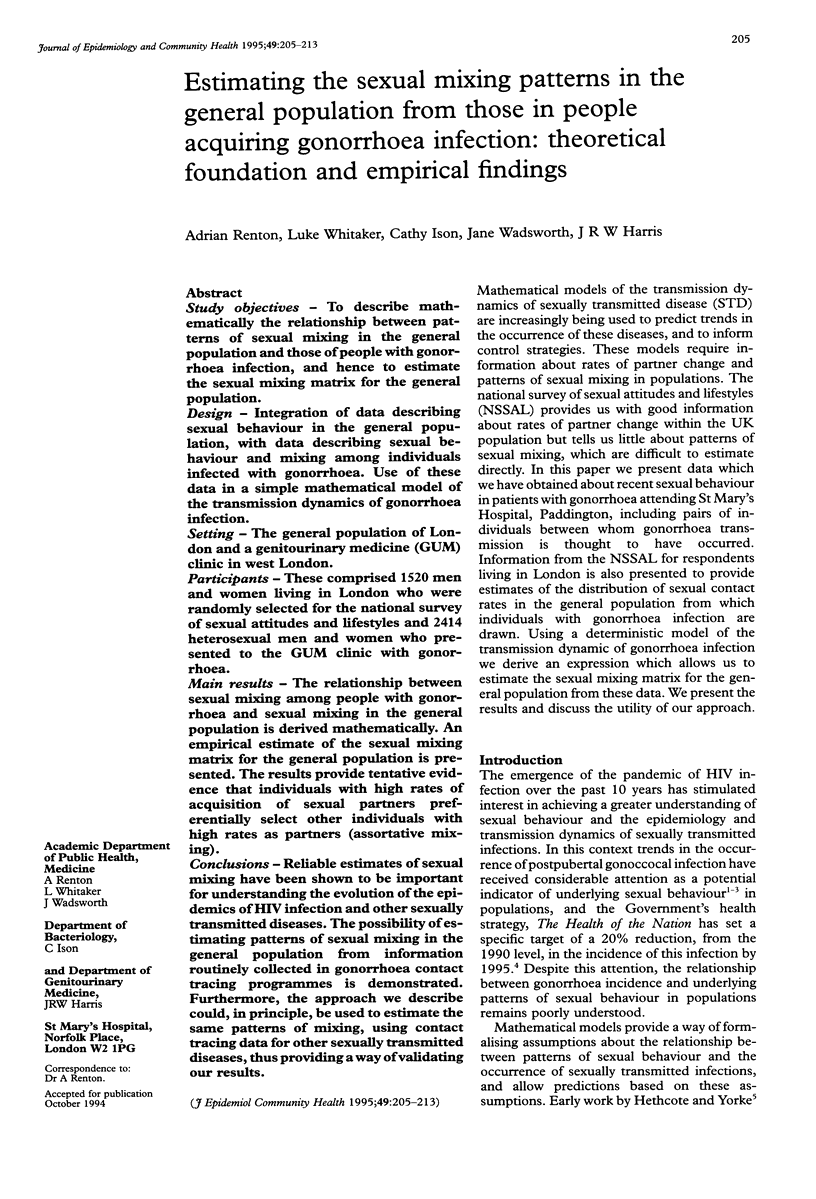
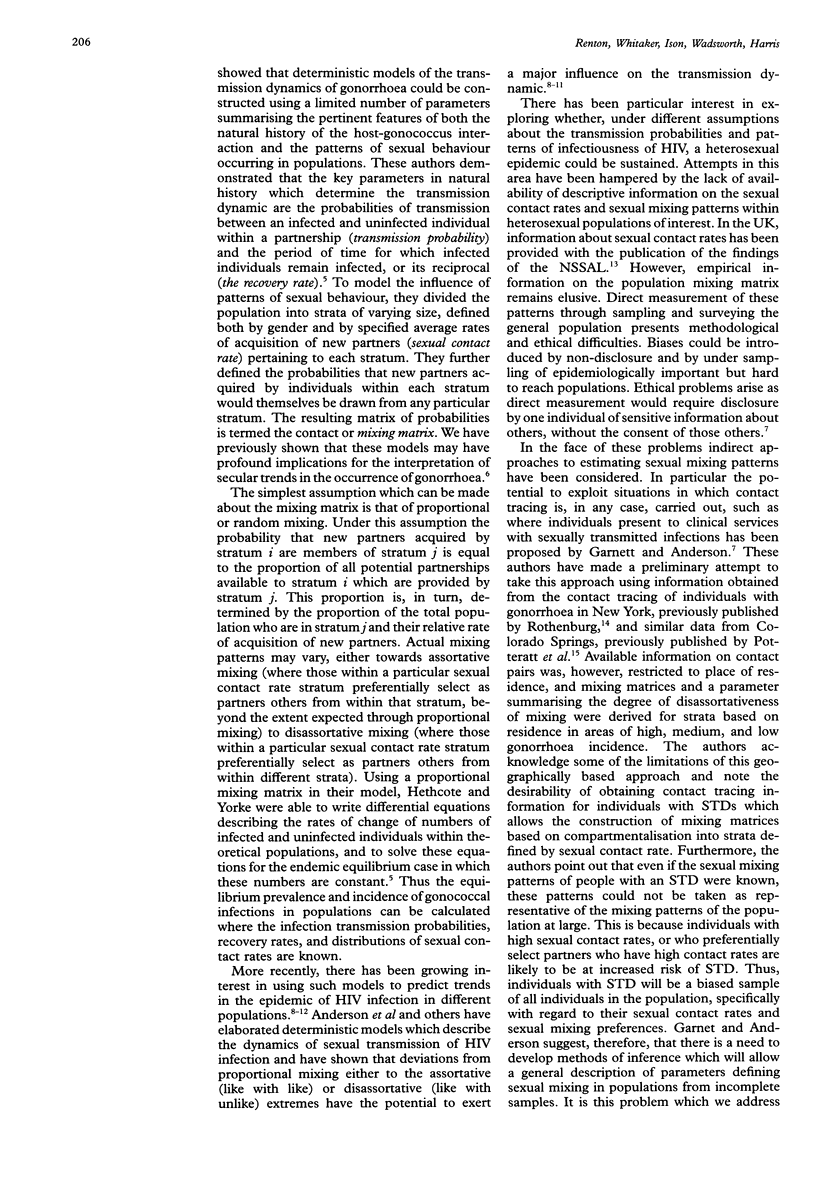
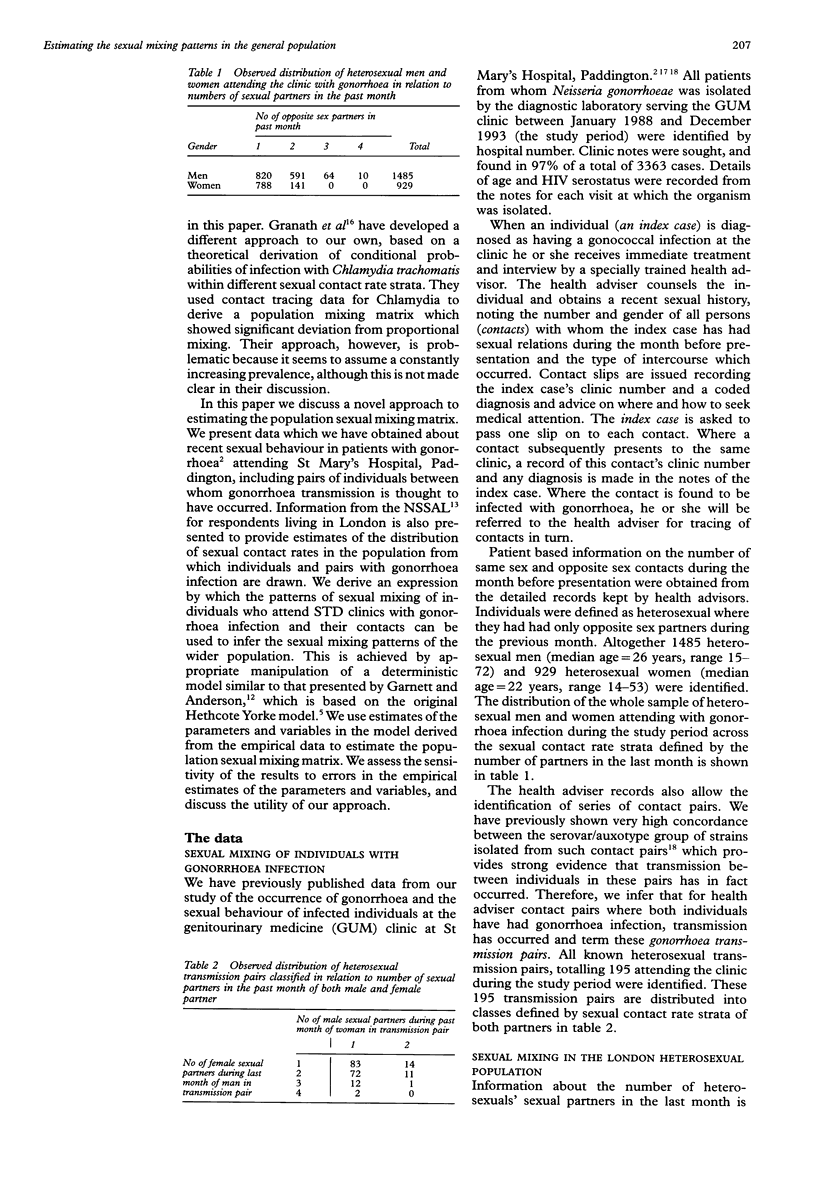
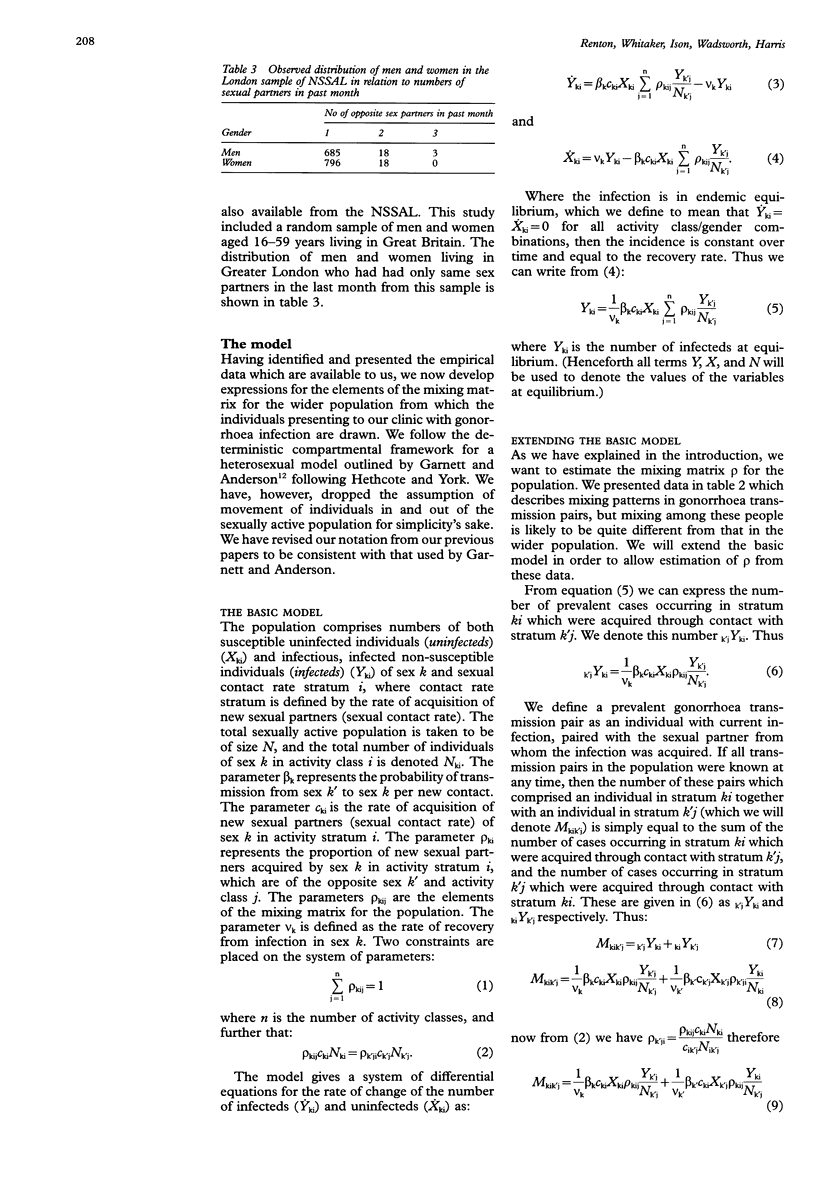
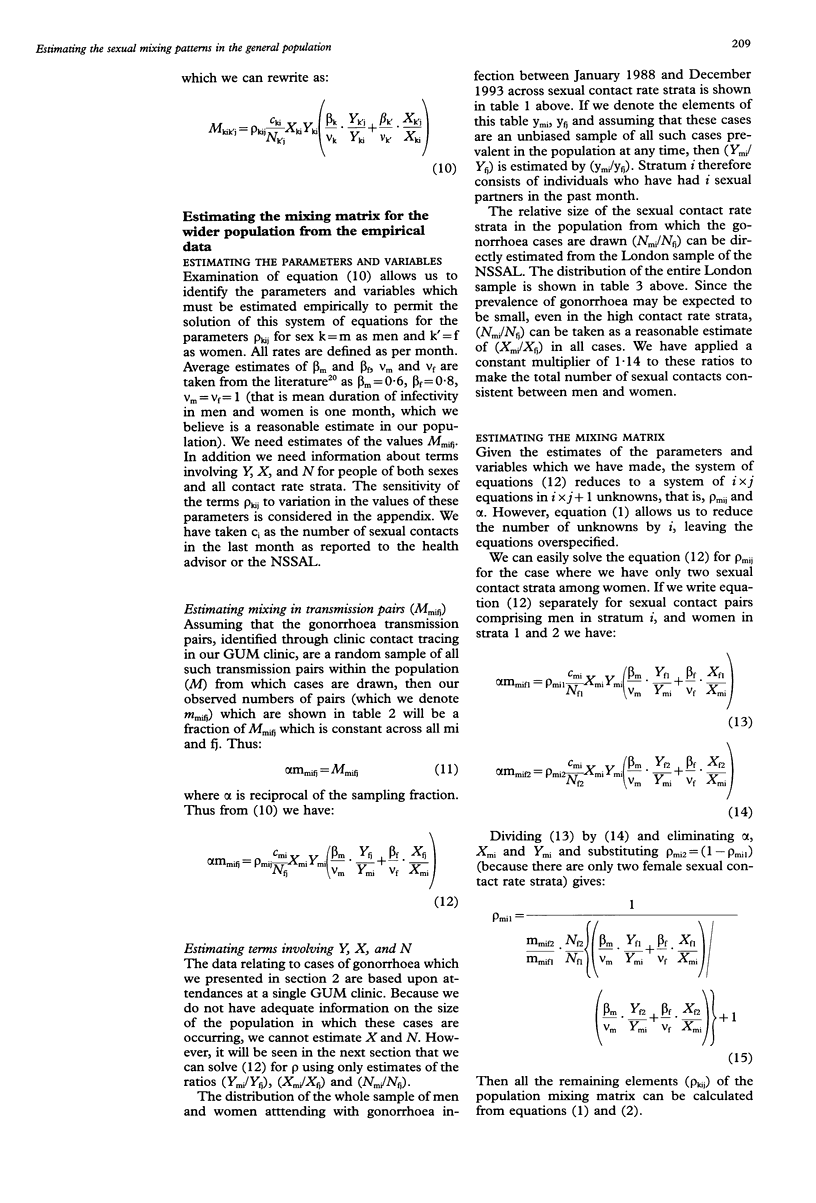
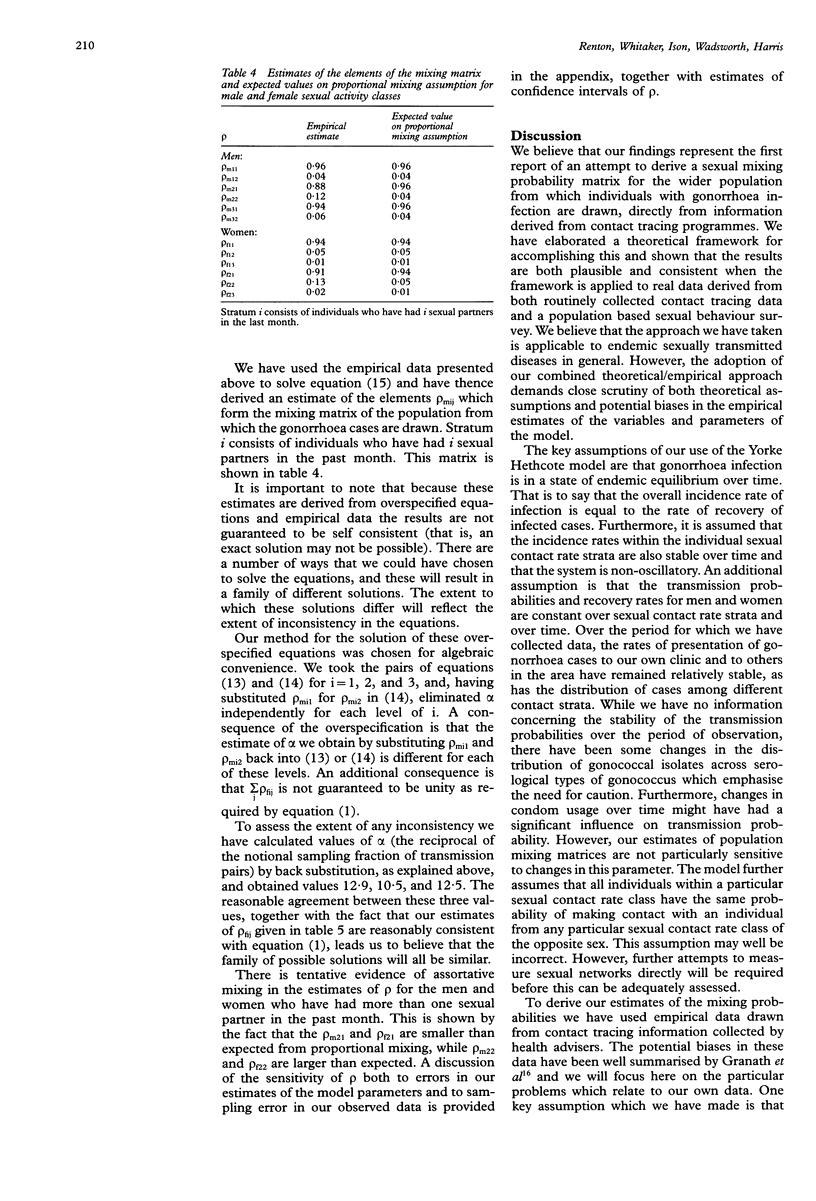
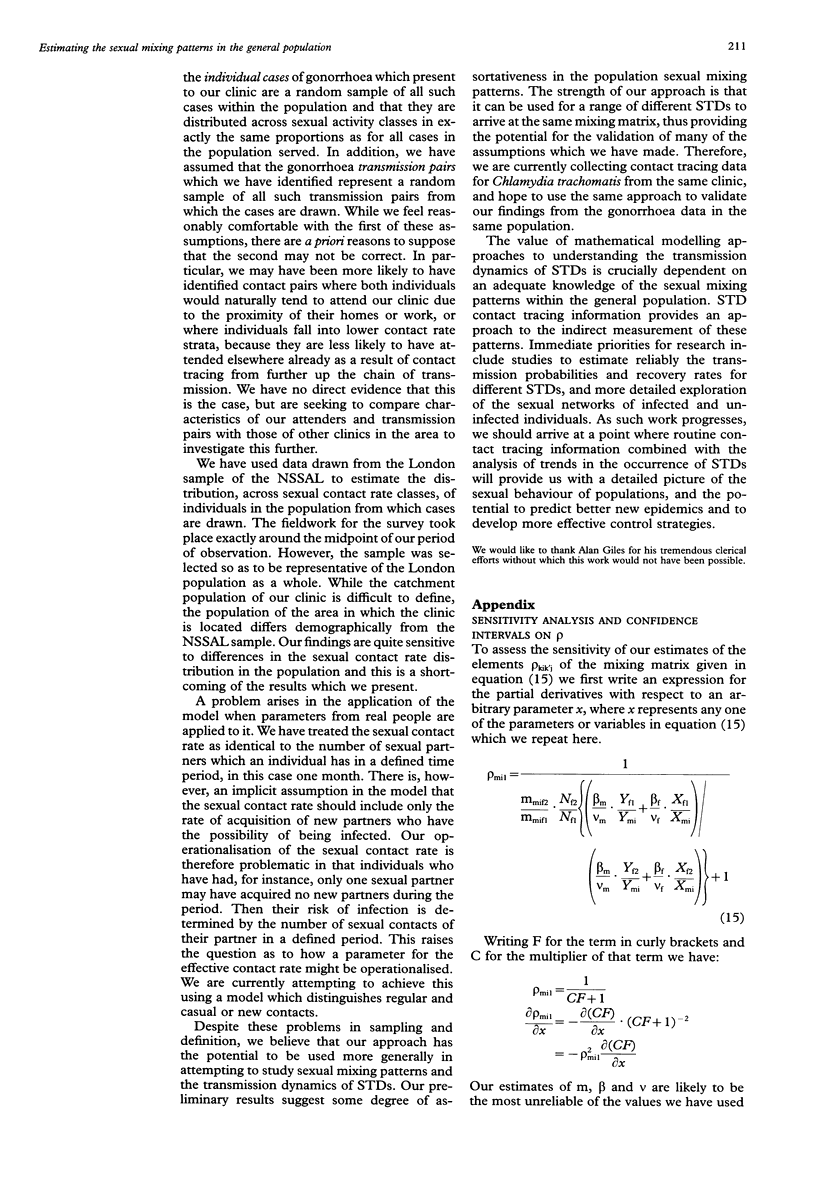
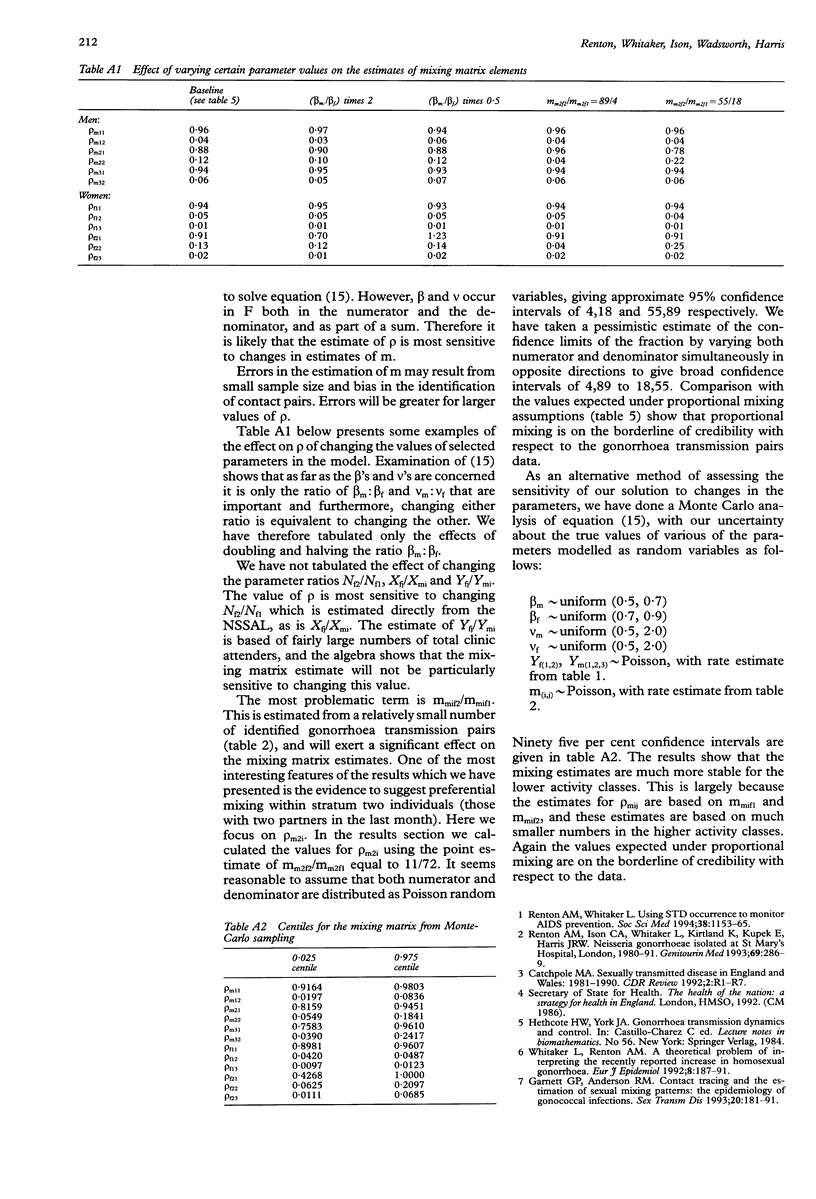
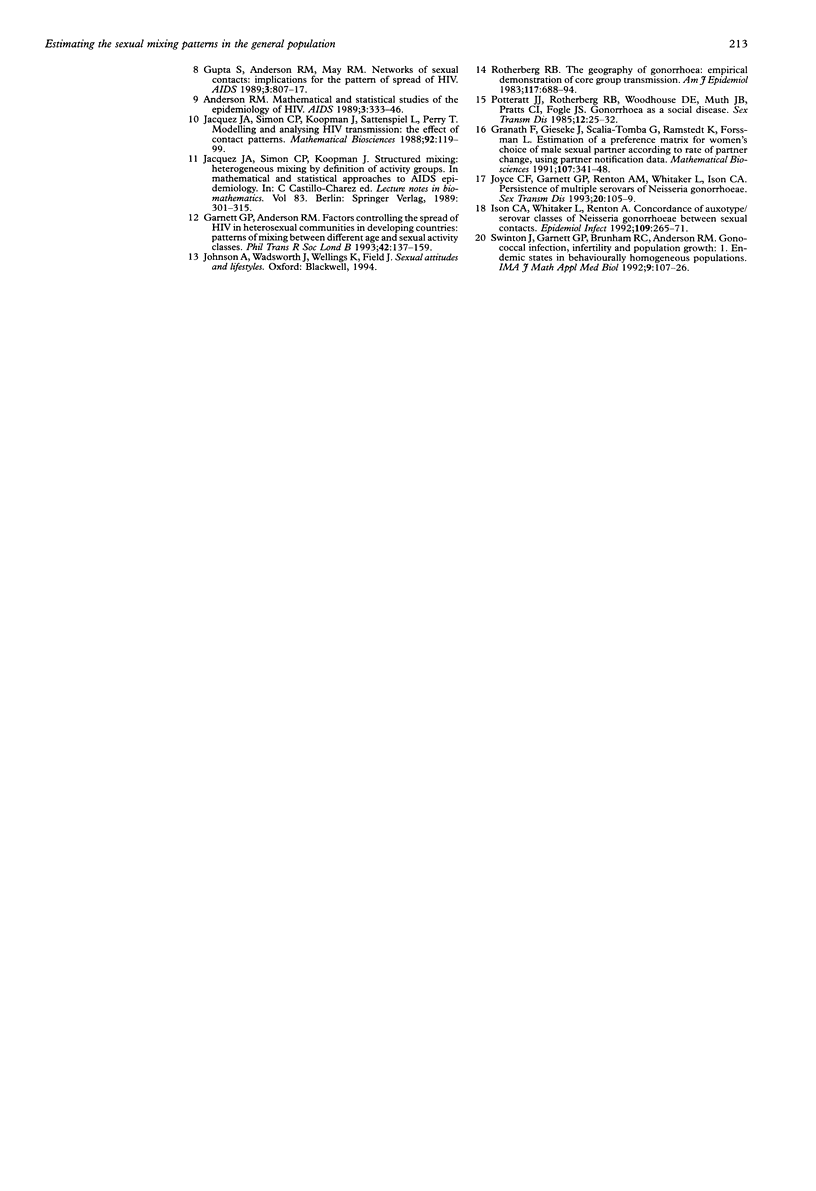
Selected References
These references are in PubMed. This may not be the complete list of references from this article.
- Anderson R. M. Mathematical and statistical studies of the epidemiology of HIV. AIDS. 1989 Jun;3(6):333–346. doi: 10.1097/00002030-198906000-00001. [DOI] [PubMed] [Google Scholar]
- Garnett G. P., Anderson R. M. Contact tracing and the estimation of sexual mixing patterns: the epidemiology of gonococcal infections. Sex Transm Dis. 1993 Jul-Aug;20(4):181–191. doi: 10.1097/00007435-199307000-00001. [DOI] [PubMed] [Google Scholar]
- Garnett G. P., Anderson R. M. Factors controlling the spread of HIV in heterosexual communities in developing countries: patterns of mixing between different age and sexual activity classes. Philos Trans R Soc Lond B Biol Sci. 1993 Oct 29;342(1300):137–159. doi: 10.1098/rstb.1993.0143. [DOI] [PubMed] [Google Scholar]
- Granath F., Giesecke J., Scalia-Tomba G., Ramstedt K., Forssman L. Estimation of a preference matrix for women's choice of male sexual partner according to rate of partner change, using partner notification data. Math Biosci. 1991 Dec;107(2):341–348. doi: 10.1016/0025-5564(91)90013-9. [DOI] [PubMed] [Google Scholar]
- Gupta S., Anderson R. M., May R. M. Networks of sexual contacts: implications for the pattern of spread of HIV. AIDS. 1989 Dec;3(12):807–817. [PubMed] [Google Scholar]
- Ison C. A., Whitaker L., Renton A. Concordance of auxotype/serovar classes of Neisseria gonorrhoeae between sexual contacts. Epidemiol Infect. 1992 Oct;109(2):265–271. doi: 10.1017/s0950268800050214. [DOI] [PMC free article] [PubMed] [Google Scholar]
- Joyce C. F., Garnett G. P., Renton A., Whitaker L., Ison C. Persistence of multiple serovars of Neisseria gonorrhoeae. Sex Transm Dis. 1993 Mar-Apr;20(2):105–109. doi: 10.1097/00007435-199303000-00009. [DOI] [PubMed] [Google Scholar]
- Potterat J. J., Rothenberg R. B., Woodhouse D. E., Muth J. B., Pratts C. I., Fogle J. S., 2nd Gonorrhea as a social disease. Sex Transm Dis. 1985 Jan-Mar;12(1):25–32. doi: 10.1097/00007435-198501000-00006. [DOI] [PubMed] [Google Scholar]
- Renton A. M., Ison C. A., Whitaker L., Kirtland K., Kupek E., Harris J. R. Neisseria gonorrhoeae isolated at St. Mary's Hospital London, 1980-91. Genitourin Med. 1993 Aug;69(4):286–289. doi: 10.1136/sti.69.4.286. [DOI] [PMC free article] [PubMed] [Google Scholar]
- Renton A. M., Whitaker L. Using STD occurrence to monitor AIDS prevention. Soc Sci Med. 1994 Apr;38(8):1153–1165. doi: 10.1016/0277-9536(94)90230-5. [DOI] [PubMed] [Google Scholar]
- Swinton J., Garnett G. P., Brunham R. C., Anderson R. M. Gonococcal infection, infertility, and population growth: I. Endemic states in behaviourally homogeneous growing populations. IMA J Math Appl Med Biol. 1992;9(2):107–126. doi: 10.1093/imammb/9.2.107. [DOI] [PubMed] [Google Scholar]
- Whitaker L., Renton A. M. A theoretical problem of interpreting the recently reported increase in homosexual gonorrhoea. Eur J Epidemiol. 1992 Mar;8(2):187–191. doi: 10.1007/BF00144798. [DOI] [PubMed] [Google Scholar]


